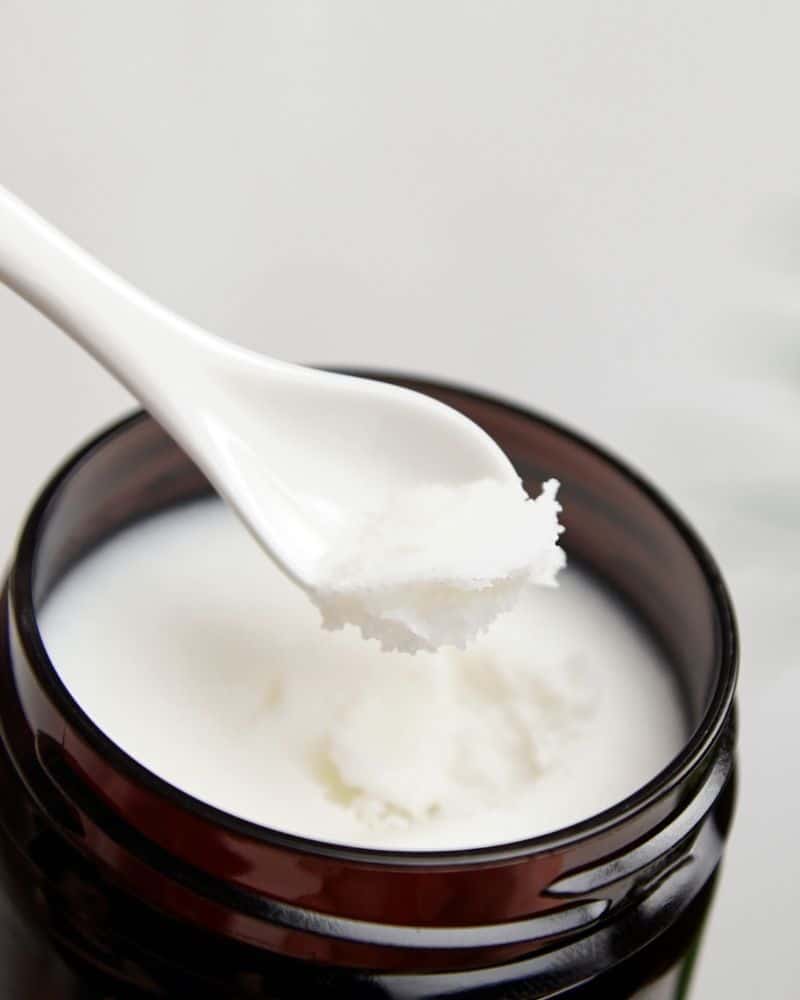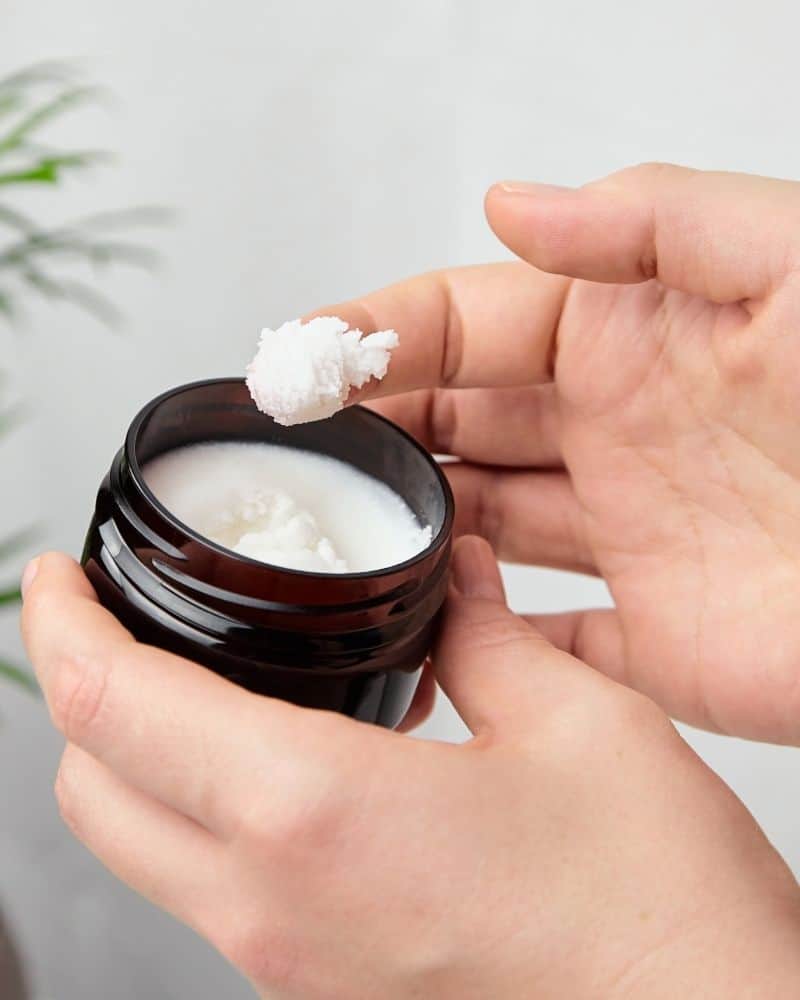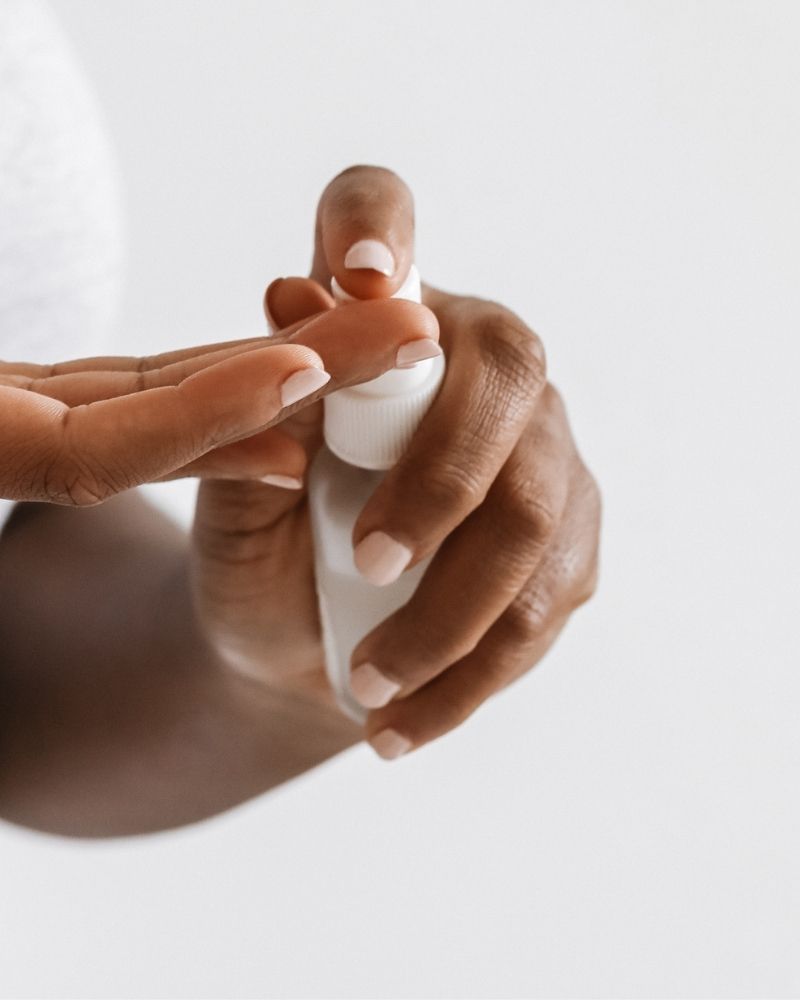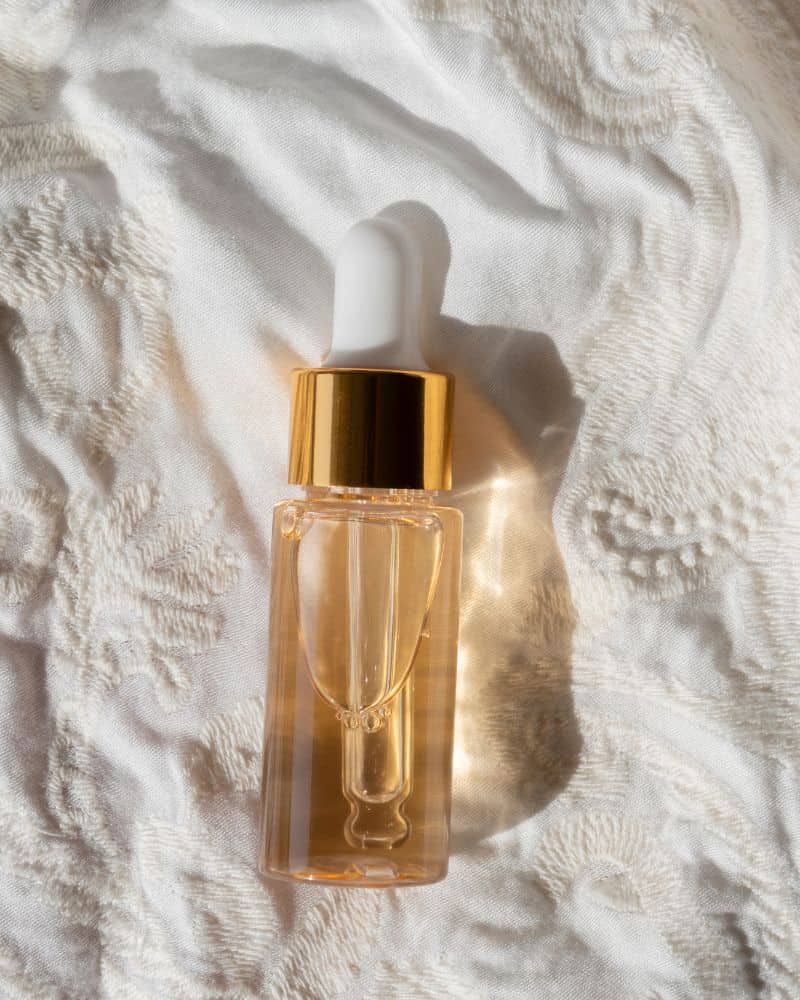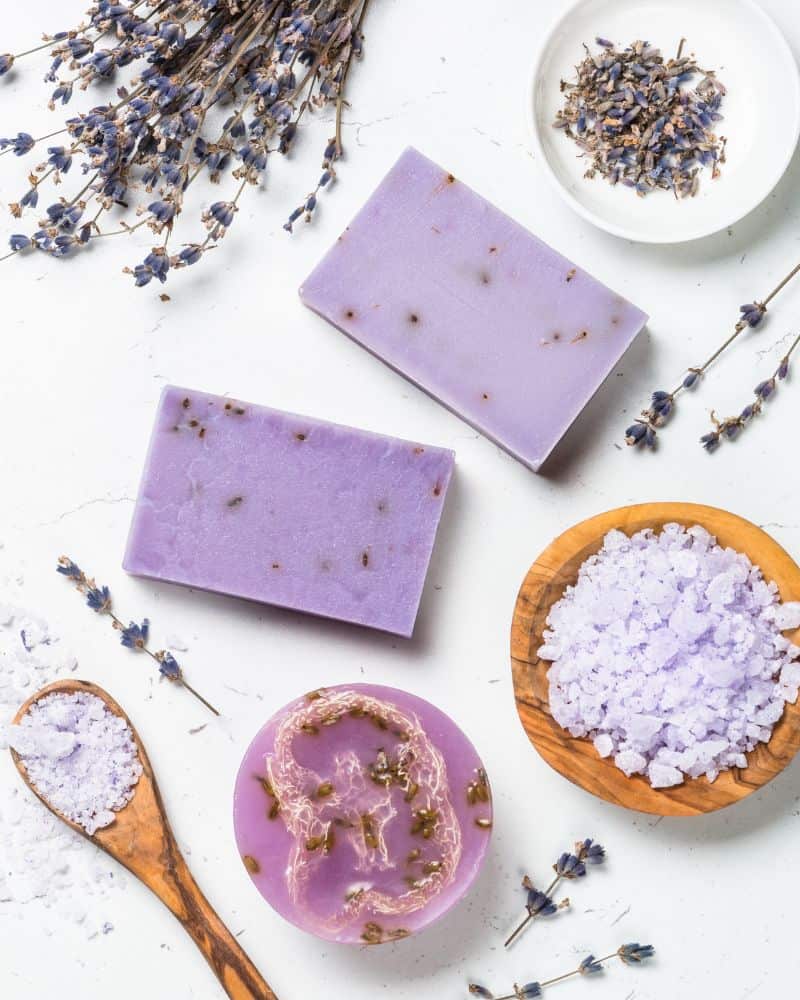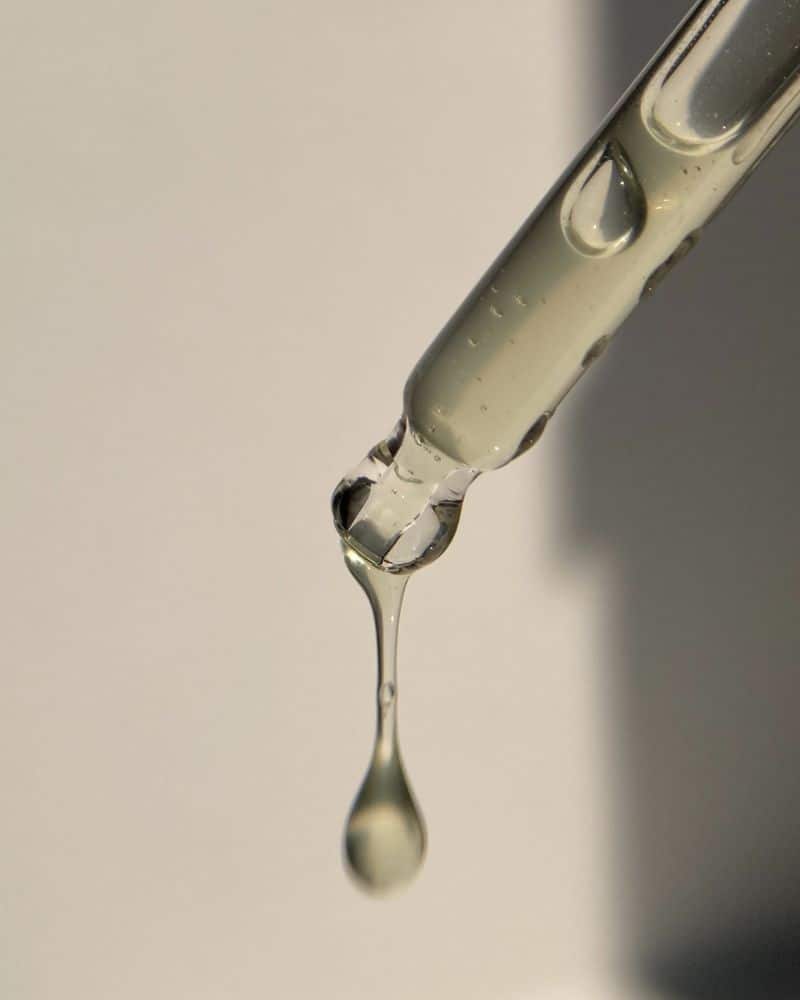Tretinoin And Niacinamide: Can They Be Used Together?
This post may contain affiliate links.
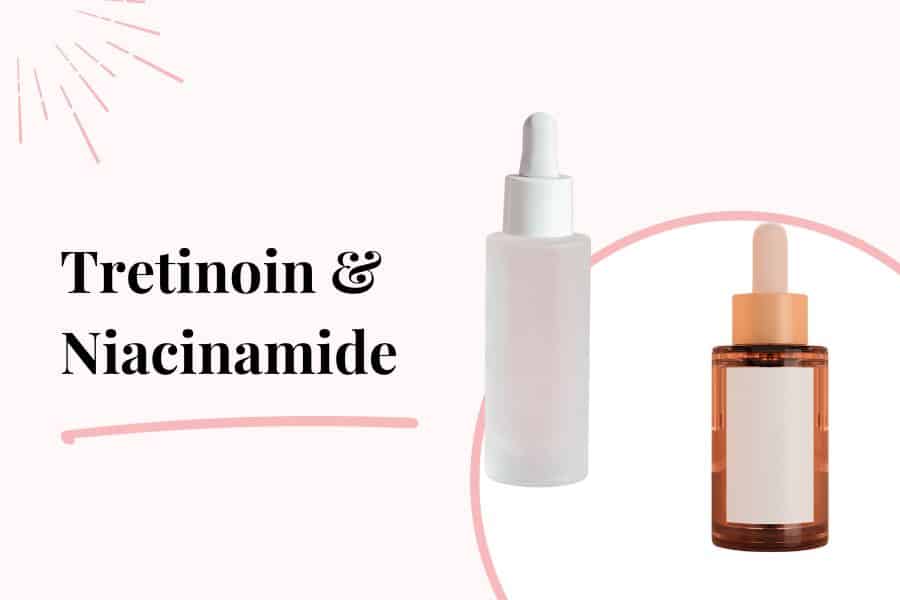
Chances are you’ve heard of both tretinoin and niacinamide – both of which have become insanely popular in recent years for their skin benefits. But what do niacinamide and tretinoin do exactly? Can you mix tretinoin and niacinamide? In this post we’ll be discussing everything you need to know about these two powerhouse ingredients, including what they do, the benefits of using them and how to properly mix them together.
What Is Tretinoin
Tretinoin is a prescription-only form of Vitamin A that speeds up skin cell turnover, making it excellent for anything from acne to wrinkles. It belongs to a class of molecules known as retinoids, which is an umbrella term for all Vitamin A compounds and derivatives like retinol or adapalene.
Tretinoin is known as a do-it-all product as it can treat clogged pores, acne, oily skin, acne scars, hyperpigmentation and signs of aging like fine lines and wrinkles. It also stimulates collagen and production. Because of it’s multitude of benefits, tretinoin is hailed as the gold standard for anti-aging and acne.
Tretinoin is one of the strongest and most effective retinoids on the market. However, it can also be one of the most irritating, which is why it’s prescription only. Tretinoin is a powerful exfoliator that can cause redness, irritation, flaking, dryness and peeling, especially when you first start using it.
Related post: Retinol Vs Retin-A: What’s The Difference?
Benefits Of Tretinoin
- Treats & prevents acne – Tretinoin unclogs pores and speeds up skin cell turnover to prevent pimples from forming. In fact, it’s FDA approved to treat acne, so you know it’s effective!
- Anti-aging – Tretinoin also smooths out fine lines and wrinkles by increasing collagen production and speeding up skin cell turnover. It’s also FDA approved for anti-aging
- Fades hyperpigmentation – Tretinoin can help fade dark spots and acne scars by increasing skin cell turnover and stimulating collagen production
- Treats acne scarring – Not only can tretinoin help with active acne, but it can also reduce the appearance of acne scars. It does so by stimulating collagen production and increasing skin cell turnover to fill in indented scarring and fade dark spots
- Smooths texture – Tretinoin smooths skin texture by speeding up cell turnover and exfoliating away dead skin, revealing smoother, softer skin
- Improves skin tone – Tretinoin can improve skin tone by lightening dark spots and scars and evening out skin tone
- Minimizes pores – Tretinoin can reduce pore size by unclogging pores and stimulating collagen production
Related post: Does Tretinoin Expire?
What Is Niacinamide
Niacinamide is a form of Vitamin B3 that offers many benefits for the skin, which is why it’s become one of the most popular skincare ingredients in the last couple years. It’s truly a do-it-all ingredient!
It’s an effective ingredient to treat acne, hyperpigmentation, and premature aging. Niacinamide can also help to brighten the skin and even out skin tone and keep the skin’s moisture barrier strong and healthy.
It’s particularly well-loved among those with oily and acne prone skin as it helps to regulate sebum production and keeps the pores clear. Niacinamide is a gentle ingredient that is suitable for all skin types, even those with sensitive skin.
Benefits Of Niacinamide

Niacinamide offers a ton of different benefits for the skin and can be used no matter what your skin type or skin concerns.
- Anti-inflammatory – Niacinamide is a great anti-inflammatory agent that can help to soothe the skin and reduce redness. Not only does it help to reduce inflammation and irritation, but it can also reduce inflammation associated with acne and other skin concerns
- Antioxidant – Niacinamide is a powerful antioxidant that helps to protect the skin from environmental damage like pollution and UV rays
- Strengthens skin’s barrier – Niacinamide helps to strengthen the skin’s barrier, keeping it healthy and happy. A strong barrier is important to keeping the skin hydrated and preventing water loss
- Fades hyperpigmentation – Niacinamide is a very effective ingredient to help fade hyperpigmentation, whether it’s from sun damage, acne scarring, or melasma
- Minimizes large pores – it’s known for its ability to minimize large pores by keeping skin hydrated and clear
- Balances oil production – Niacinamide is perfect for those with oily skin as it helps to regulate sebum production and balance skin
- Treats acne – since niacinamide has anti-inflammatory properties and can help to balance oil production, it’s a great ingredient to help treat acneImproves skin texture
- Smooths fine lines & wrinkles – Niacinamide helps to stimulate collagen production, which can help to smooth out fine lines and wrinkles
- Hydrates – niacinamide helps to keep skin hydrated by strengthening the skin barrier and preventing water loss
Can You Use Niacinamide And Tretinoin Together?
The short answer is yes, you can use tretinoin and niacinamide together! In fact, using these two ingredients together can give you even more powerful results.
Tretinoin + Niacinamide = A Dream Team for acne, scarring, pigmentation and aging.
Tretinoin helps to improve the appearance of acne, scarring, pigmentation and premature aging while niacinamide helps to soothe the skin, reduce redness and inflammation, fade hyperpigmentation and keep the skin hydrated.
In fact, many custom prescriptions like Curology and Apostrophe actually combine tretinoin and niacinamide in the same formula. Niacinamide is probably the best serum to use with tretinoin as it helps to reduce redness and irritation associated with tretinoin and retinol use.
When used together, tretinoin and niacinamide can help with a variety of skin issues and totally transform your skin.
Related post: Can You Use Niacinamide With Azelaic Acid?
Can you use niacinamide and retinol at same time?
Yes, you can use niacinamide and retinol at the same time! Both ingredients are perfectly safe to layer on top of one another. In fact, in some formulations they are mixed together!
How To Layer Niacinamide And Tretinoin
When using tretinoin and niacinamide together, it’s important to layer them properly in your skincare routine to prevent any irritation.
You can separate the two products in your routine, depending on your preferences. The easiest way is to use niacinamide in the morning and tretinoin at night. But you can safely mix them together if you prefer to use both tretinoin and niacinamide at the same time.
Here’s an example of how to use tretinoin and niacinamide together
Step 1: Cleanse your face with a gentle cleanser and gently pat dry
Step 2: Apply niacinamide serum all over your face and wait a few minutes for it to absorb
Step 3: Apply tretinoin cream all over your face
Step 4: Apply your moisturizer
You can use tretinoin and niacinamide together without any issues or worries of irritation. In fact, the niacinamide can actually help to reduce the irritation from the tretinoin!
Tretinoin and Niacinamide Order

So now that we know we can use tretinoin and niacinamide, you’re probably wondering which comes first, niacinamide or tretinoin?
The tretinoin and niacinamide order is important when using these ingredients together to get the best results and prevent any irritation.
If you’re wondering should you use niacinamide or tretinoin first, keep on reading
What order you use them in will depend on what products you are using. As always, you’ll want to follow the thinnest to thickest rule. So apply whichever product is thinner first, followed by the thicker product.
If you’re using a tretinoin cream and niacinamide serum, apply the niacinamide first and wait a few minutes for it to absorb before applying tretinoin.
If you’re using tretinoin gel and moisturizer, apply the tretinoin gel, wait a few minutes then follow with the niacinamide moisturizer.
While niacinamide comes in many different forms: cleansers, toners, serums, etc., tretinoin just comes in a gel or cream form, which makes it a little bit easier!
Tretinoin And Niacinamide Side Effects
While niacinamide doesn’t have too many side effects, tretinoin can come along with a few. The most common side effects from tretinoin include:
-Dryness
-Irritation
-Redness
-Peeling
Niacinamide can actually help to reduce the irritation from tretinoin, so using the two together can actually help to minimize any tretinoin side effects.
Tretinoin And Niacinamide FAQs

Should I use niacinamide before or after tretinoin?
If you’re wondering should you use niacinamide or tretinoin first, the answer will depend on your products! The order for tretinoin and niacinamide is important to make sure you’re using them correctly and to get the best results.
As a general rule, you’ll want to follow the thinnest to thickest rule. So apply whichever product is thinner first, followed by the thicker product.
For example, if you’re using a niacinamide serum and a tretinoin cream, use the niacinamide serum first, followed by the tretinoin cream.
Can niacinamide and retinol be used together?
Yes, niacinamide and retinol can be used together without any issues! In fact, using the two together can actually help to improve the results of both ingredients.
Niacinamide can help to reduce the irritation associated with retinol use, while retinol can help to exfoliate, smooth skin and reduce texture, acne and signs of aging.
Do you put tretinoin on before or after moisturizer?
The tretinoin order is important when using this ingredient in your skincare routine. As always, apply the thinner product first, followed by the thicker product. When it comes to tretinoin, you can bend this rule a little and use a moisturizer before tretinoin, which can help buffer the active ingredients and reduce any potential irritation or other side effects.
For maximum benefits, tretinoin should be used before moisturizer, but if you find your skin is getting too irritated, you can use it after moisturizer.
What can you not mix with tretinoin?
You should not mix tretinoin with other topical acne treatments, such as benzoyl peroxide or salicylic acid. You also want to be careful when using tretinoin with other exfoliating ingredients, such as glycolic acid.
Mixing tretinoin with other irritating ingredients can actually make the irritation and side effects worse. Plus, some ingredients, like benzoyl peroxide actually render the tretinoin ineffective.
What can you not mix with niacinamide?
Niacinamide can be used with most other skincare ingredients, but you want to avoid using it with products that contain high concentrations of acids, such as vitamin C.
If you do use niacinamide with products that contain acidic ingredients, you might experience some tingling, redness or flushing, also known as a niacin flush. This is temporary, but uncomfortable nonetheless.
Tretinoin And Niacinamide Wrap Up
Tretinoin and niacinamide are two powerful skincare ingredients that can be used together for some amazing skin benefits. When used correctly, tretinoin and niacinamide can help to improve signs of acne, treat and prevent acne and smooth textural irregularities. What’s even better is that you can use both of these ingredients together for maximum results without any issues or side effects.
